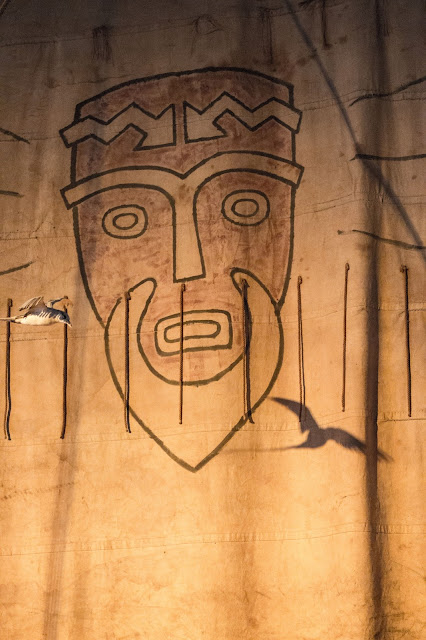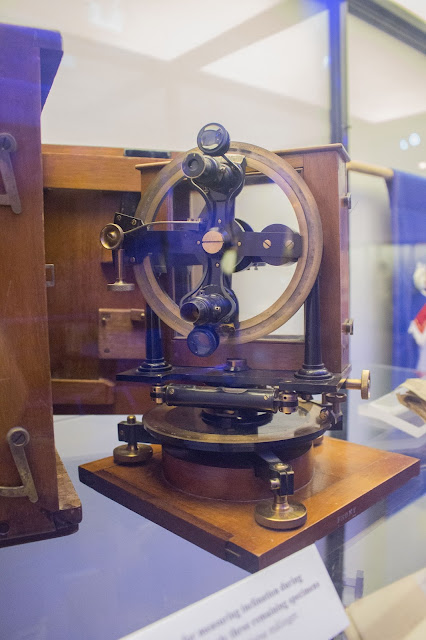Without a doubt, Stockholm is one of the most beautiful cities in the world. It's tucked in among a bunch of islands (the Stockholm Archipelago - go figure).
Which means that if you're arriving by ship it's quite a treat just getting there.
 |
| Nice place for those discriminating buyers with very deep pockets |
Most of the houses you see winding your way around the islands are summer homes. Red is the dominant house color. There's a reason for that. I thought it was so they could find the place in wintertime if they had to. Nope. It's money. Back in the day, red paint was the cheapest to make.
Like I mentioned, Stockholm is gorgeous. Possibly because Sweden was "neutral" during the war. That meant that Stockholm didn't get reduced to rubble (courtesy of the German marauders, or the Allies evicting them) .
The architecture is stunning.
Stockholm actually occupies 14 islands of the archipelago. Like everything else in Europe, Stockholm has been around a long time (yawn) and dates back to 6,000 BC (stone age).
One of the things it's known for are some outstanding universities. Here we see some typical college students hard at work at an outdoor physics class:
 |
| I took this picture from the ship as we sailed by |
Loved this fountain
 |
| It's called "God father on the arch of heaven" |
 |
| I would have named it "Naked surfer bangs head and sees stars" |
 |
| As I mentioned, Stockholm covers a collection of islands. This bascule bridge was cool - swinging steel meets solid rock. |
 |
| Apparently the light signals are for guys only |
 |
| See what I mean? |
This is also the home of the Nobel Prize. The big banquet is held here, at the City Hall:
 |
| Anybody see Bob Dylan yet? By Arild Vågen - Own work, CC BY-SA 3.0, https://commons.wikimedia.org/w/index.php?curid=16524364 |
Enough of the serious crap. What about goofy stuff?
 |
| Apparently they're prejudiced against the color blue (I know, it means no parking) |
 |
| No parking if you're colorblind? |
 |
| Seriously. Do you really need a sign for something this obvious? |
 |
| This isn't an optical illusion. The smokestack really is bent. |
Leaving Stockholm, dodging the cool ferries
and avoiding the rocks
the next port was Oslo, Norway.
Once again, arriving by ship the vista is stunning.
Oslo isn't real big (less than 2M people) and after you try eating in a restaurant you will understand why. Holy crap is that place expensive! Oslo is rated the second most expensive city in the world (after Tokyo). You need to take out a loan if you want more than one cup of coffee. As it happens, Norwegians have money. Lots of money. Back in the 60's the Norwegians went to sea looking for oil. They found the motherload. Their north sea oil fields are huge. Unlike, say Venezuela, the Norwegians have managed their oil wealth well. It's rumored each Norwegian is backed by $1,000,000 in the treasury. They haven't, however, sat back thinking the oil will last forever. Norway has invested heavily in wind power.
 |
| These aren't giant beer cans (dammit). They're ocean platforms for wind turbines. |
More screwy statues
This child slide struck me as extraordinarily safe.
 |
| What fun is a slide that if you ride your bike down you don't risk any broken bones? Jeez, it's like a swing you can't jump out of at apogee. |
Cool, interactive art work
 |
| Wonder if they spew snow in the winter? |
 |
| Took a ferry to get here. Guess which one of the buildings houses the Kon Tiki and Ra. Yeah I got it wrong too. |
Walked into the wrong museum, but wasn't disappointed. The Fram Museum houses a ship that was used in expeditions of the Arctic and Antarctic regions by the Norwegian explorers Fridtjof Nansen, Otto Sverdrup, Oscar Wisting, and Roald Amundsen between 1893 and 1912.
They got the idea to explore the arctic ice cap by analyzing driftwood found on one side of the cap that was from ships that had been wrecked on the other side. The idea was postulated that a current flowed under the ice cap (it does) and they could use this current to reach the north pole (you can't).
The trick was to build a ship strong enough and designed in such a way that instead of freezing into the ice (which will crunch you like an aluminium beer can at a frat party) would "float" up on the ice.
 |
| At sea |
 |
| On ice (note the windmill - used to generate electricity, not grind flour) |
 |
| It's built from multiple layers of different types of wood and is the strongest wooden ship I've ever seen. |
 |
| The propeller is 2-bladed and can be retracted into the hull for safe keeping |
 |
| Spare propellers in case you get hosed and lose the first one |
The idea actually worked. Sort of. Well, the ship didn't get crushed, but they didn't float up to the north pole. They spent 3 years stuck in the ice. Fortunately, they planned for this in advance. They were well armed and were able to supplement stores with whale blubber (yuk), polar bear meat, walrus meat (probably fishy tasting), and tacos.
They also had entertainment.
As expected, the ship got stuck on the ice.
 |
| "look at the grouse" (famous 3 Stooges line) |
Navigating way way up north in the old days wasn't easy.
When you get up way far north a compass does not work. It just spins around erratically (much like my first instrument training flights). Instead they built very clever magnetic measuring doohickeys.
Coincidentally, later in the trip we anchored next to the modern Fram up in Spitsbergen.
 |
| Like it's namesake, the modern Fram is an arctic exploration ship. |
Next door to the Fram is a "boat" I read about when I was 10 and never dreamed I'd see in person.
 |
| Kon Tiki - I'm guessing this picture was taken at the end of the voyage (note the land in the background and the depth of their tans) |
 |
| Thor Heyerdahl By uncredited - nasa.gov, Public Domain, https://commons.wikimedia.org/w/index.php?curid=1334029 |
"Heyerdahl believed that people from South America could have settled Polynesia in pre-Columbian times. His aim in mounting the Kon-Tiki expedition was to show, by using only the materials and technologies available to those people at the time, that there were no technical reasons to prevent them from having done so."
It 'em 101 days and they covered 4,300 miles from Peru to Tuamotu Island.
 |
| I thought the addition of the tern shadow was a nice touch. |
It was hard to photograph because of the low lighting. It costs 10 euros to get in - you'd think they could afford to pay for better lighting.
The raft was constructed of balsa logs lashed together with hemp rope. Soon after they put to sea, the balsa logs began to take on water (waterlogged). If they'd used steel cables to hold it together - the swelling of the logs would probably have broken apart the raft. It scared the hell out of them until they realized that the water only soaked into the balsa logs to a depth of 3 inches.
 |
| The US Army was interested in the trip (why?) and donated a bunch of food. |
Thor had so much fun on the Kon Tiki that he decided in 1969 and 1970 to see if you could sail from Morocco to Barbados. These were the Ra expeditions (I and II).
The Ra expeditions damn near killed them. The raft this time was made from Egyptian papyrus reeds.
 |
| Same stupid lame lighting again |
In the first voyage they made it 4,000 miles before the raft broke apart. They had neglected to add one critical component in the raft's construction.
 |
| You can see the critical piece here (this is the Ra II) - it's the line that holds up the stern. |
 |
| You don't need the line in the bow - waves keep pushing the bow up. |
I thought this was the end of Thor and his voyages. Not so. In 1978 he built another reed raft - the Tigris. This time he sailed from Iraq intending to go to Pakistan. Sailing through the middle east wasn't the best route he could have picked. The raft lasted 5 months and was still seaworthy when Thor got pissed that none of the surrounding governments would allow him to land. He set the boat on fire (which explains quite well why the museum doesn't display it today).
"Today we burn our proud ship ... to protest against inhuman elements in the world of 1978 ... Now we are forced to stop at the entrance to the Red Sea. Surrounded by military airplanes and warships from the world's most civilized and developed nations, we have been denied permission by friendly governments, for reasons of security, to land anywhere, but in the tiny, and still neutral, Republic of Djibouti. Elsewhere around us, brothers and neighbors are engaged in homicide with means made available to them by those who lead humanity on our joint road into the third millennium."
Ah Thor. Ya gotta love the guy.
- Although much of his work remains unaccepted within the scientific community, Heyerdahl increased public interest in ancient history and anthropology. He also showed that long-distance ocean voyages were possible with ancient designs. As such, he was a major practitioner of experimental archaeology.
Leaving Oslo things get real interesting - if you know where to look, but this blog entry has gone on long enough.








































What no titties?
ReplyDeleteOK, OK...so the Norwegians don't know how to properly lighten up their museums....I have to tell them to spruce up the museums..you're right.
ReplyDelete